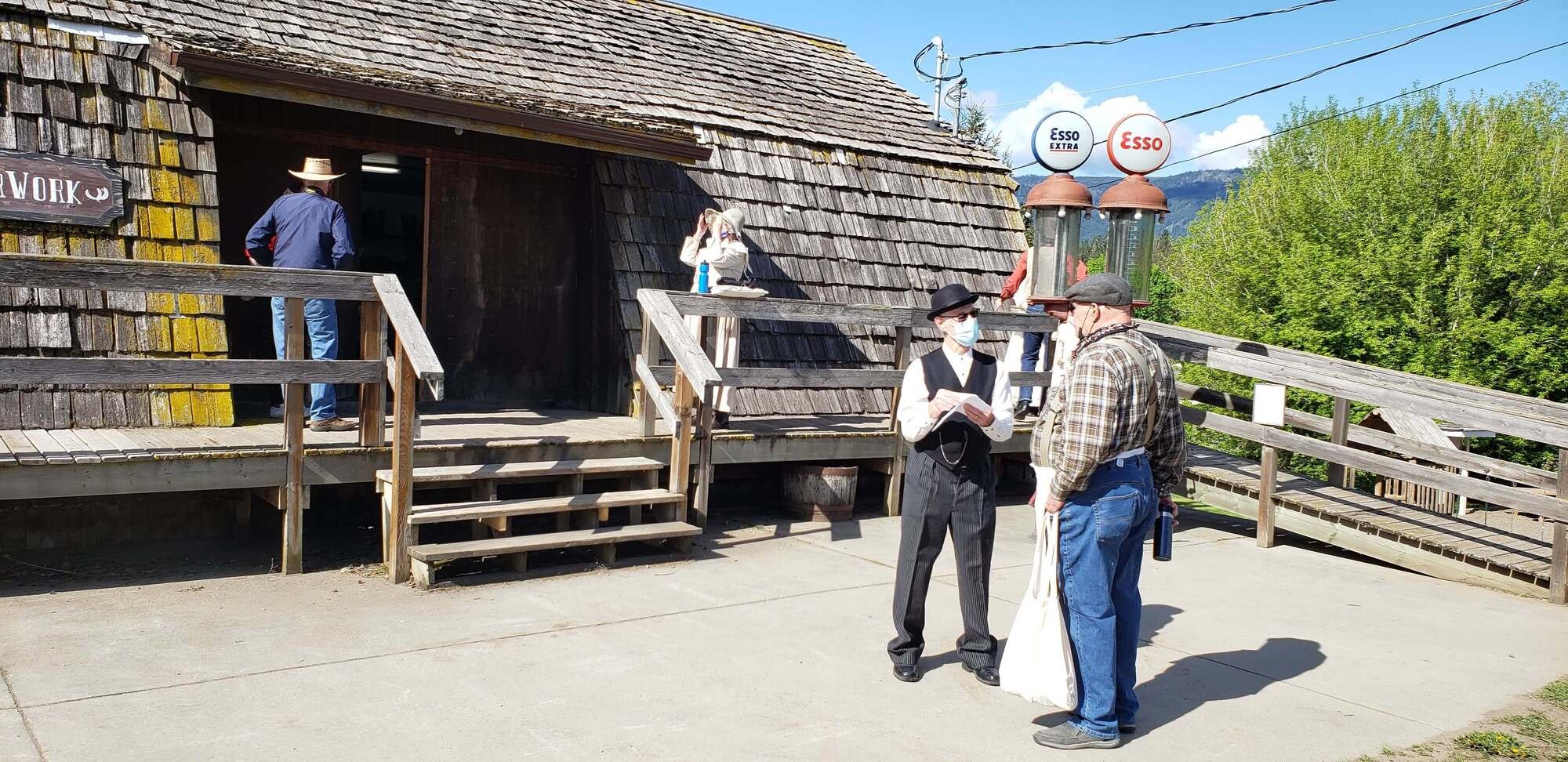
OUR STORY
The O’Keefe Ranch resides on the traditional, ancestral and unceded territory of the sqilxʷ/syilx (Okanagan) peoples. The story of the Ranch is closely intertwined with the story of the colonization of the North Okanagan.
No Treaty
In 1858, the history of the Okanagan would be forever changed by an event that did not even happen here: the discovery of gold in the Cariboo. Tens of thousands flocked to British Columbia and the promise of wealth. Few would find gold, but they all needed to eat. From 1858 to 1868, cowboys drove over 22,000 head of cattle up from the border through the Okanagan Valley and on to the Cariboo and its hungry miners. British Officials, worried about their ability to maintain control over the area, encouraged British men to stay and build homes by making land available for as little as $1 per acre. These deals were conducted under the false claim that the lands were wild and empty. No treaty had been signed with the syilx and the Crown had no right to sell their land.
The Cowboys Arrive
Three cowboys - Cornelius O’Keefe, Thomas Greenhow and Thomas Wood - rode into the Okanagan at just the right moment in history to benefit. In June of 1867, they were driving cattle north when they reached the head of Swan Lake. There they saw the rich grasslands, the reliable water supply, and they each claimed 160 acres. Thomas Wood would move on but the other two men were here to stay, becoming some of the area’s earliest settlers.
Starting a homestead from nothing is not easy, especially for someone who is living far from home in a land that is new to them. Like many settlers, both men turned to Indigenous women for partners, wives, and guidance. Thomas Greenhow lived with a syilx woman named Marianne, while Cornelius O’Keefe lived with Alapetsa, also known as Rosie. Along with raising their children and running their households, Marrianne and Alapetsa likely acted as ambassadors between their extended families and their husbands. Like almost all the settlers in the area, Cornelius O’Keefe and Thomas Greenhow would both remarry with white women, distancing themselves from their syilx families as the settler community grew. Over several decades, the crown would force the syilx people into smaller and smaller reserves, taking actions to ensure they would be dependent on the Crown, while giving settlers the space they needed to thrive.
The Cowboy Life
Cornelius thrived, building a mill, church, graveyard, general store, post office and blacksmith shop on his land. In the 1880s, he moved his growing second family from a log cabin into a mansion. This was an era in Okanagan history when a few hard working men were able to take ownership over thousands of acres and raise increasingly larger herds. O'Keefe did not run his ranch alone, instead employing many people including members of the syilx and Chinese community. Ken Mather, a former Ranch curator and expert in cowboy history writes, “The myth of the “cowboy” grew up around the young men who worked with the cattle, even though the mystique of the untamed and romantic cowboy life was sometimes belied by the rough, low-paying life that they actually led”.
Growth and Heritage
By 1900, the O’Keefe Ranch had grown to 12,000 acres and it included some of the best land in the area. But the industry was changing, the money moving from cattle to orchards, and O’Keefe sold much of his land in 1907. The O’Keefe family continued ranching and living on the site but the finances of the family dwindled. Cornelius would die in 1919, leaving the remaining land to his third wife, Elizabeth, who would in turn leave it to her son Tierney. Tierney and his wife Betty decided to open their home as a heritage site in 1967, 100 years after Cornelius first claimed his land. The Ranch is now owned by the City of Vernon and operated by the O’Keefe Ranch & Interior Heritage Society, a non-profit society.
For information on the sqilxʷ/syilx (Okanagan) peoples please visit here




